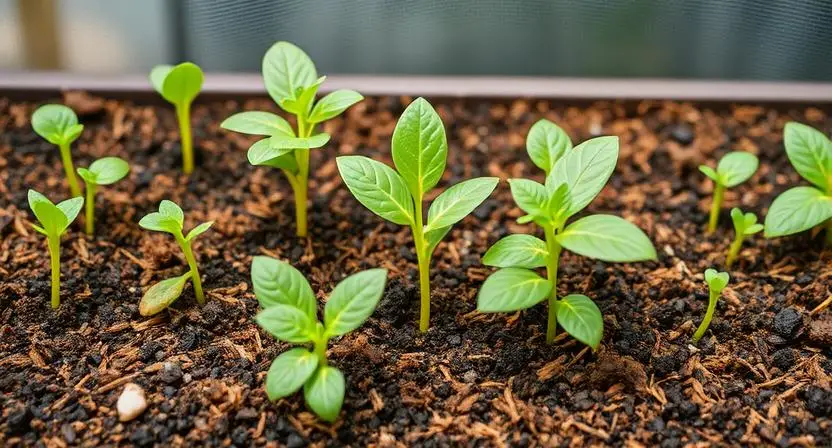We use affiliate links to run our site. When you buy through links on our site, we may earn an affiliate commission, without any added cost to you. Learn more
When it comes to choosing between coco coir and soil for beginners, there’s no simple answer. It really hinges on how eager you are to learn about plant care and what you’re comfortable managing. Let’s break down the benefits and challenges of using coco coir versus soil for new growers.
Why Choose Coco Coir?
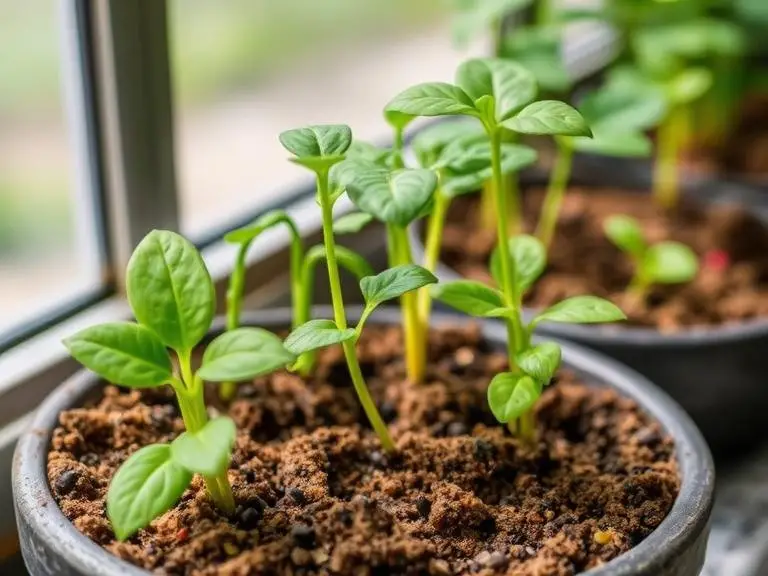
Water Management: Think of coco coir as a sponge that holds water while allowing air to reach the roots. Unlike soil, which can get soggy and cause root rot if you overdo it, coco coir helps you avoid those pitfalls. It strikes a great balance, making it easier for beginners to keep their plants happy.
Clean Slate: Coco coir is generally free from bacteria and pests, which means fewer headaches for you. You won’t have to worry as much about diseases that can come from soil, giving you one less thing to stress over.
Neutral pH: The pH level of coco coir is almost neutral, which means it provides a stable environment for your plants. This is great because it gives you more control over how your plants absorb nutrients compared to soils that might be too acidic or too alkaline.
Eco-Friendly Option: If you care about the planet, coco coir is a winner. It’s a renewable resource made from coconut husks, making it a sustainable alternative to peat moss.
Easy to Use: Compressed coco coir bricks are straightforward to rehydrate—just add water!
Hydroponics Friendly: If you’re curious about soilless growing methods, coco coir is a fantastic choice. It mimics soil but can work in hydroponic systems, giving you the best of both worlds.
Cost-Effective: With the right care, you can reuse coco coir, which could save you money in the long run.
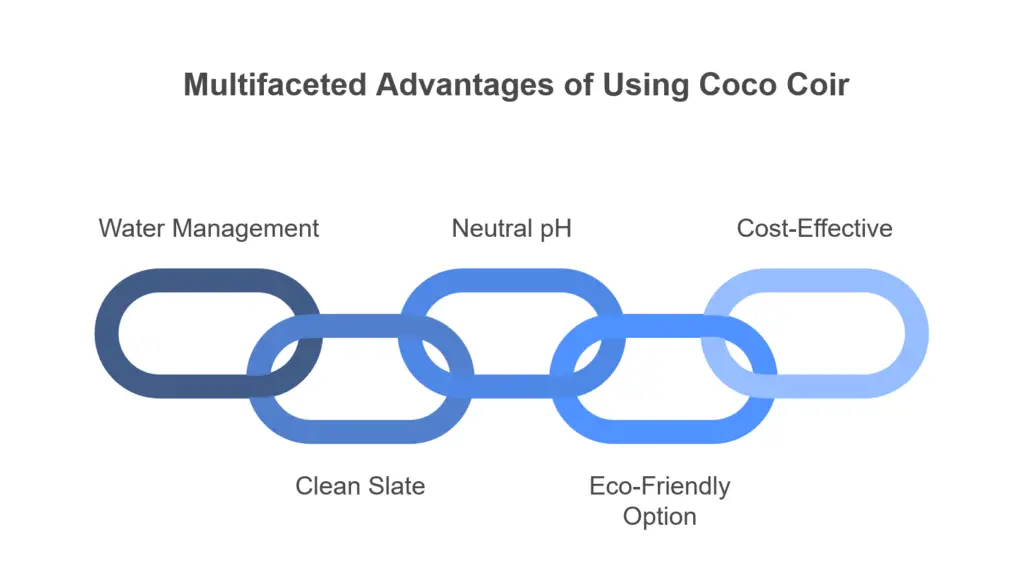
Challenges with Coco Coir
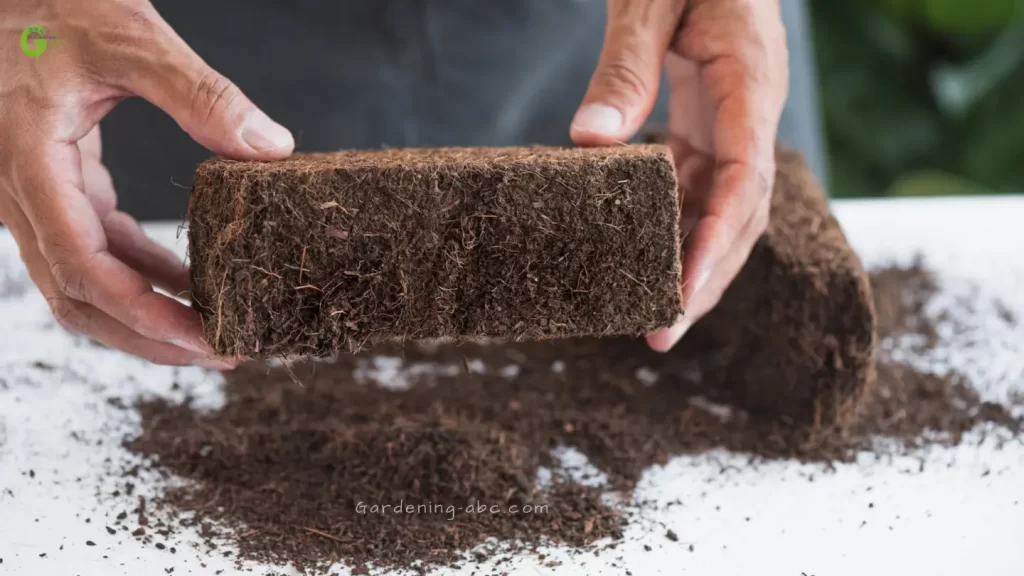
Nutrient Deficiency: Here’s the catch: coco coir doesn’t come loaded with nutrients. It’s like starting with an empty plate—you’ll need to add fertilizers yourself. This requires some learning about what your plants need and when they need it, which can be tricky for novices.
Nutrient Balancing Act: While coco coir holds onto nutrients well, it can also lead to imbalances if you’re not careful. Beginners might need to educate themselves about nutrient lockouts, especially for calcium and magnesium.
Prepping Required: You’ll need to rehydrate those compressed bricks before you can use them. This adds a step that might feel like an extra chore if you’re used to just opening a bag of soil.
Salt Levels: Depending on where it comes from, coco coir can contain salts that need rinsing out before use. So, make sure you rinse it well!
Quick Drying: While it retains moisture well, some folks find that coco coir can dry out faster than traditional soil. Keep an eye on moisture levels so your plants don’t get thirsty.
- Mixing Materials: Sometimes, you may need to mix coco coir with other materials like perlite or compost to get the right balance for drainage and nutrients. This requires a bit of knowledge about what works best together.
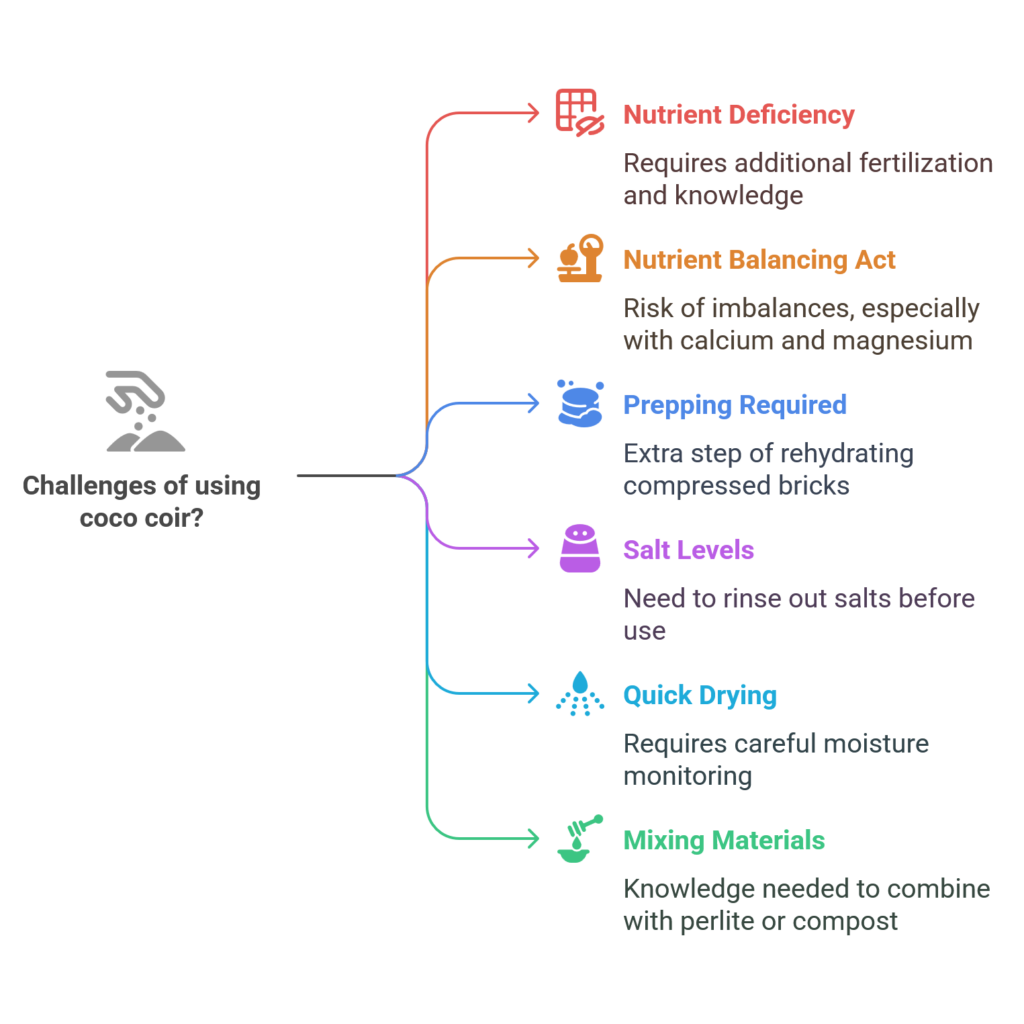
Soil for Beginners
Traditional soil is often seen as an easier option since it naturally contains nutrients. However, it can come with its own problems—like poor drainage or pesky pests—that can confuse beginners trying to figure out what’s wrong with their plants.
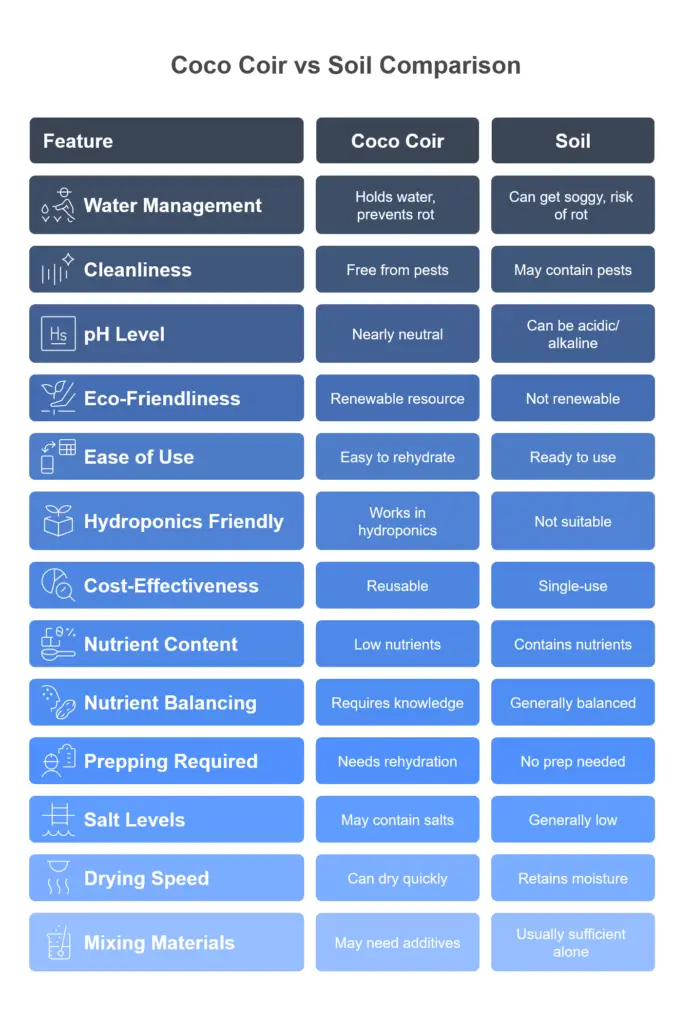
Trending Soilless Growing Mediums of 2025: What the Pros Are Using
The Bottom Line:
If you’re brand new and want a simpler start without diving into nutrient management right away, consider using a good quality potting mix. These mixes usually contain a blend of ingredients (often including some coco coir) that strike a balance of drainage, water retention, and initial nutrients, making them less intimidating at first.
But if you’re ready to roll up your sleeves and learn about plant nutrition and watering techniques, coco coir could be your best friend! Its excellent water retention and aeration can lead to healthier roots and fewer issues with overwatering compared to some soils. Plus, its cleanliness helps prevent those annoying beginner problems related to soilborne diseases.
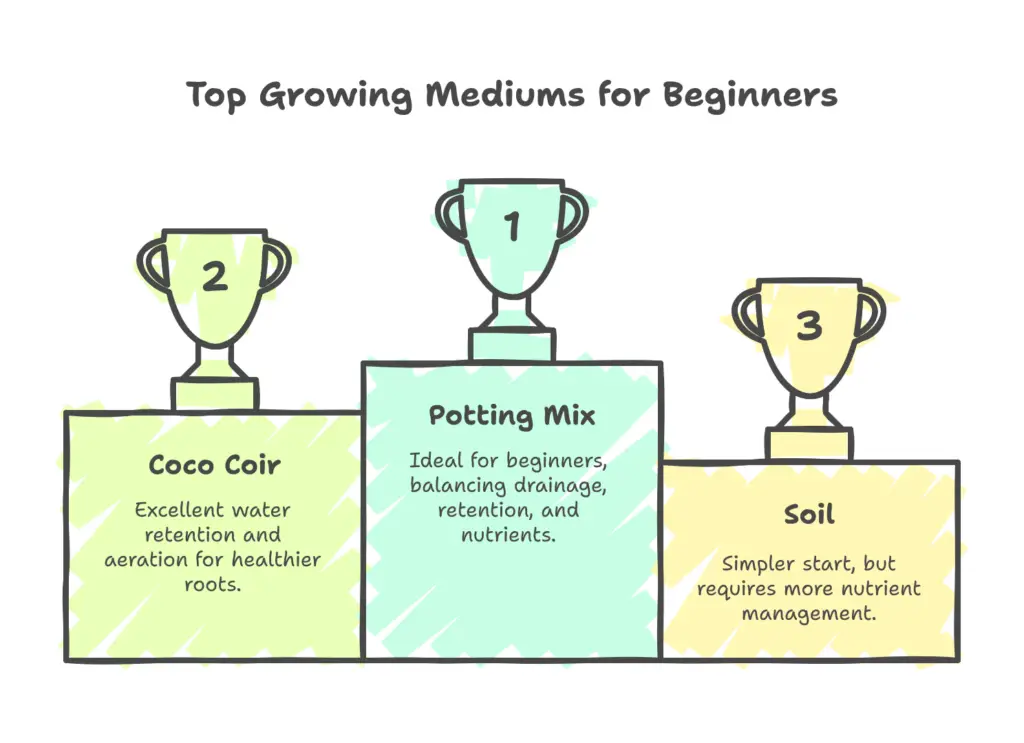
Ultimately, whether coco coir is better than soil depends on your learning style and willingness to manage nutrients. Starting off with a pre-made potting mix is often the best choice if you are an absolute beginner.
But if you go for coco coir, just remember—you’ll need to actively manage those nutrients from day one! Many experienced gardeners swear by coco coir when used correctly, highlighting its benefits when approached with care.
So, what will it be? Are you ready to dive into the world of coco coir for beginners, or do you prefer the simplicity of soil? The choice is yours!
Amazon and the Amazon logo are trademarks of Amazon.com, Inc, or its affiliates.

Hi there! My name is Prasenjit and I’m an avid gardener and someone who has grown a passion for growing plants. From my hands-on experience, I have learned what works and what doesn’t. Here I share everything I have learned.
